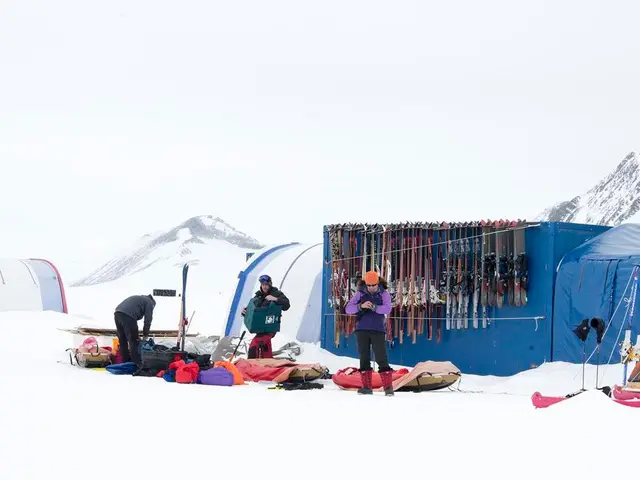Brutal Treks: Unveiling 6 Most Challenging Hikes Across the Northeastern Region
Hiking enthusiasts seeking a challenging ascent in the Northeast can embark on the Great Gulf Trail, which scales the West Branch of the Peabody River through a wilderness area and ascends Mount Washington via a notorious precipitous headwall in New Hampshire.
This demanding path runs for 7.4 miles from the Great Gulf Wilderness parking area on Route 16's west side to a junction near the summit. Typically, hikers take two days to complete the journey, utilizing designated backcountry campsites or finding secluded spots at least 200 feet from the trail.
The initial stages of the trail follow the river closely, with occasional retreats into the dense forest. While the hiking remains fairly easy up to the headwall, crossing several brooks can be difficult during periods of high water.
Dating back to 1881, some sections of the Great Gulf Trail were blazed, but it wasn't until 1908 that a trail-blazing team constructed the entire trail, following its present route in just six days.
The trail presents several highlights, including a suspension bridge over the West Branch, the large glacial erratic named Clam Rock, and a stretch that climbs slippery ledges alongside beautiful cascades, such as Weetamoo Cascade. At 6.5 miles, hikers will reach Spaulding Lake—a small mountain tarn—before facing the challenging headwall, which rises 1,600 feet over 0.8 mile.
This rocky and steep climb requires caution due to loose or unstable rocks and winter snow slides that may wash away trail markers. However, the effort will be rewarded by spectacular views of the Gulf and the Presidential Range on clear days. Hikers then continue 0.4 mile along Gulfside Trail and Trinity Heights Connector to reach the summit of Mount Washington.
There are various routes down from the summit, including following the Mt. Washington Auto Road and rejoining the Great Gulf Trail below the headwall. The total distance to the summit is approximately 7.8 miles.
The Great Gulf Trail, a part of the Appalachian Trail system, offers hikers a unique experience with its diverse landscapes and wildlife within the Great Gulf Wilderness, one of the most remote areas in the White Mountains. Hikers should be prepared for challenging terrain, steep inclines, and potentially hazardous conditions, especially during inclement weather. Missed landmarks, such as the climb up Wildcat Mountain and the descent into Pinkham Notch Visitor Center, may no longer be part of the trail experience due to a recent bridge closure and temporary detour.
- For outdoor-living enthusiasts who enjoy adventure travel, the Great Gulf Trail, a part of the Appalachian Trail system, provides an opportunity to explore the remote and wild Great Gulf Wilderness in New Hampshire.
- Home-and-garden desirable features of the Great Gulf Trail include its diverse landscapes, breath-taking cascades, and the suspension bridge over the West Branch, offering an unforgettable travel experience.
- After conquering the challenging ascent of the Great Gulf Trail and reaching the summit of Mount Washington, hikers can enjoy sports like skiing or hiking downtown, merging lifestyle preferences with the thrill of their adventure-travel endeavors.






